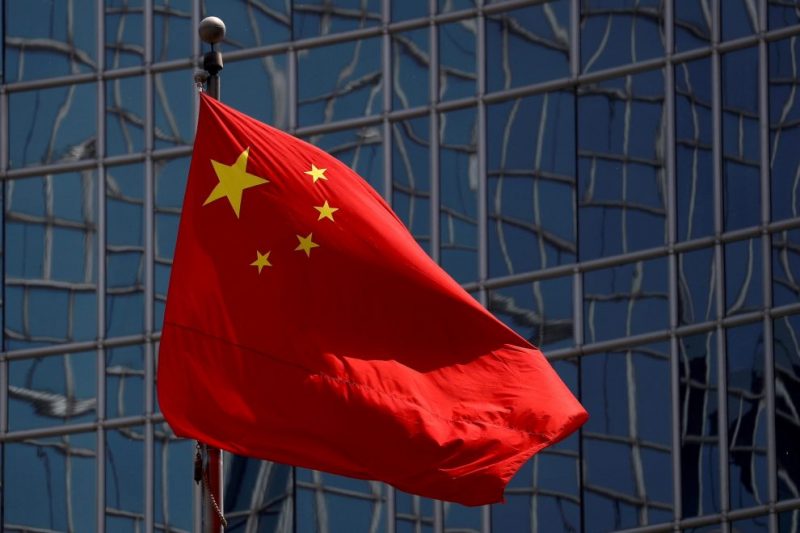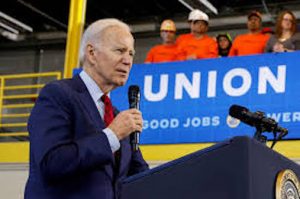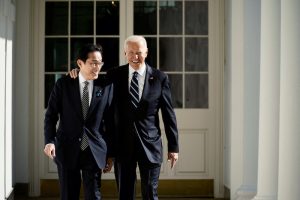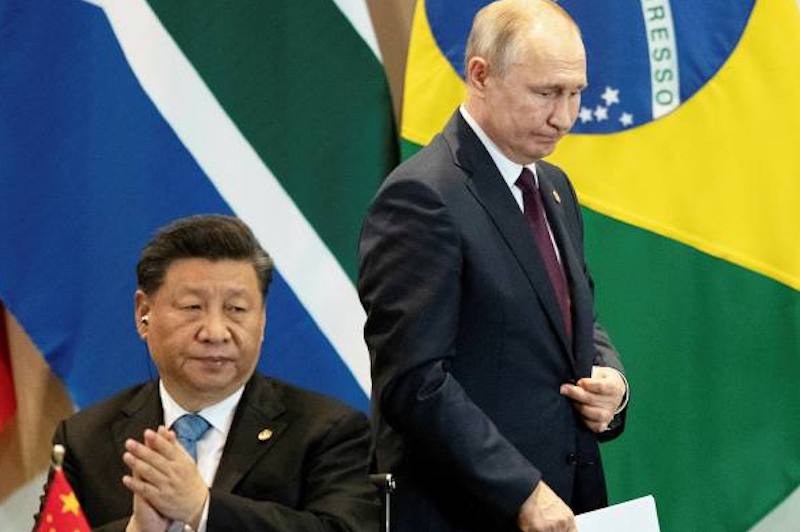China’s bid to join the Pacific nations trade pact – the Comprehensive and Progressive Trans-Pacific Partnership – signals Beijing’s desire for even more influence across the region, its critics say.
But that search for better trade terms with other Asia-Pacific nations has also been interpreted as a move to fill the vacuum left when Obama’s successor, Donald Trump, pulled out of the Pacific Rim trade deal in early 2017.
Whatever the motive, what China’s application to join the club does do is present a significant challenge for President Joe Biden’s administration and the 11 existing members of the CPTPP, who will now have to decide whether to agree to negotiate a deal with Beijing in the coming months.
Beijing was not invited when Washington took the initiative in promoting the Trans-Pacific Partnership (TPP) as it was formerly known. Then-president Barack Obama sold the deal as the way to ensure the US would have a big say in shaping future world trade rules. More of a say than China, that is.
China’s September 16 application to join the CPTPP came a day after the US, Britain and Australia announced a new military partnership, Aukus, and just days before Taiwan announced it was seeking membership.
Since then, US Trade Representative Katherine Tai revealed on a visit to Tokyo that the US is now looking to set up a new trade arrangement “with allies and friendly nations” in Asia next year.
That partnership would see cooperation on labour, plus environmental and digital trade issues, and a joint statement also later referred to “third country concerns,” which was widely understood to be a reference to China.
Membership of the CPTPP, though, could help offset damage to China from the tariff war launched by Trump in 2018. It also might counter a trend towards the “decoupling” of China from Western trading partners.
But it’s far from clear that Communist-ruled China, with its massive state sector and authoritarian approach to handling digital data, private enterprises and labour relations, would actually enact the reforms needed to comply with the CPTPP’s stringent requirements.
Historic Beginnings
The CPTPP evolved from a 2005 agreement that initially included only tiny Brunei, New Zealand, Singapore and Chile. More members joined the grouping, then known as the Trans-Pacific Partnership in 2008 when the US signalled its interest, and in 2011 the Obama administration said the deal would be the centrepiece of US economic engagement in the region.
Others, like China, might be able to join later, officials said. Thrashing out an agreement took several more years, and a deal was signed in early 2016. Just a year later, Trump pulled out and the 11 remaining members, which now also included Australia, Canada, Japan, Mexico, Peru, Vietnam and Malaysia, set to work on an amended deal.
That was finally agreed on in late 2018. The UK formally applied in February 2021, and now China and Taiwan have asked to join. Several other countries including Thailand, Indonesia, Colombia and South Korea are said to be interested, while some CPTPP member countries have yet to ratify the agreement.
What Is China’s Strategy?
Chinese officials want to block Taiwan, the democratically-ruled island that Beijing claims as its own territory, from gaining a seat at the table. The US pullout paved the way for Chinese President Xi Jinping to now claim China was the champion of free trade and anti-protectionism and CPTPP membership would, in their eyes, support that claim.
It also would expand China’s preferential access to more markets at a time when its economy is slowing and it still faces punitive tariffs on exports to the US.
Yasuhiro Goto, an expert on Asian and Chinese economies and industry, and a professor at Asia University in Tokyo, thinks China wants to give the impression that it’s ready to open up its markets, carry out long-delayed state-owned enterprise (SOE) reforms and to open up government procurement to foreign competition – longstanding areas of contention with its trading partners.
Those goals align with Xi’s aims of upstaging the US and countering its influence. “China is trying to drive a wedge between US allies and trying to claim more leadership in the region while the US is distracted from trade policy,” claimed Shiro Armstrong, director of the East Asia Bureau of Economic Research and associate professor at Australian National University’s Crawford School of Public Policy.
The Taiwan Issue
Taiwan’s attempt to join the pact complicates matters for CPTPP members, especially those with close trade ties with Beijing.
Two decades ago, the World Trade Organization finessed the issue of memberships for both China and Taiwan. But these are more openly antagonistic times.
“The Taiwan region is an inalienable part of China,” Chinese Foreign ministry spokesman Zhao Lijian said. “We are firmly opposed to any official contacts between Taiwan and other countries, as well as Taiwan’s accession to any agreements or organisations that are of an official nature.”
Taiwan’s market economy is a better fit for the CPTPP, John Deng, a Taiwan minister without portfolio, told reporters. “We have democracy and the rule of law backing us. Our laws are transparent to all,” he said.
Barriers To Entry
Some analysts say China’s Communist-ruled, state-led economy has a long way to go to comply with the CPTPP’s labour and environmental standards, its stringent protection of intellectual property and with opening government procurement to foreign competition, among many other requirements.
That’s the view Rajiv Biswas, Asia-Pacific chief economist at IHS Markit, who said: “It poses considerable obstacles since China has not got a track record of having those standards in so many different chapters of the CPTPP.
“Some areas like government procurement and competition could be obstacles for China… because of the need for quite a lot of domestic policy reform.”
The CPTPP requires that members allow workers to join labour unions – and China provides no guarantee of freedom of assembly or speech.
It forbids forced disclosure of source codes, but China has been moving in the opposite direction of the spirit of the CPTPP with its new Data Security Law adding data localisation requirements, Mireya Solis of the Brookings Institution noted in a recent essay.
Beijing would also want exclusions for eliminating state subsidies and other privileges for state-owned enterprises and for its controls on cross-border data flows and protection of privacy.
China has relaxed restrictions on foreign investment in many areas but would likely need to do more to loosen requirements that foreign companies work with local partners, a stipulation that is seen as a factor in compelling investors to share technology.
Politics And Prospects
Ultimately, the bigger sticking point may be the CPTPP’s requirement for consensus among its members. Beijing’s relations with Australia and Canada, two of the other biggest CPTPP economies, have been fraught with tensions.
But several countries, including Malaysia and Singapore, have voiced support for China’s entry. The CPTPP, like the TPP, included carve-outs to ease the way for some countries with less open and developed economies, like Vietnam, to join. Both Vietnam and Malaysia negotiated exemptions from some commitments.
But China, as the world’s second largest economy and manufacturing powerhouse, is unlikely to get as much leeway, said Shiro Armstrong. “You would not expect member countries to give China any exemptions like Vietnam and Malaysia. China will have to sign up to strict standards on all those fronts,” he said.
Washington could put pressure on its neighbours Canada and Mexico to oppose China’s entry based on a section of the US-Mexico-Canada Agreement, the revised version of NAFTA, to not negotiate a trade deal with a “non-market economy,” namely China.
But the only action the US could take would be the unlikely option of pulling out of the United States-Mexico-Canada Agreement.
A decision could be deferred for a few years to allow China to implement reforms, said Biswas. But ultimately, whether Beijing can join will be a “geopolitical call,” he says. “If two or three CPTPP members are not comfortable for China to join, that is going to be sufficient to stop the process.”
- By Kazuhiko Shimizu
Read more:
Taiwan Tells Australia Pacific Pact Bid Will Benefit Both
Taiwan Blasts ‘Arch Criminal’ China For Pacific Trade Pact Threats
























